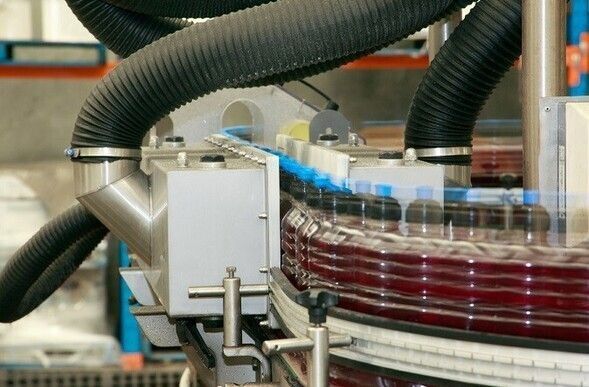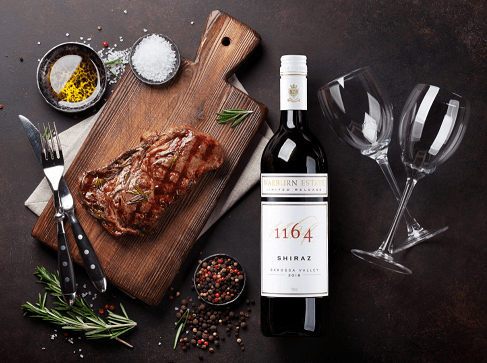Air Drying
Case Studies
Air drying jars for paper labelling (conveyor line)
Challenge
To dry cream cheese jars to enable the effective application of paper labelling (standard) and pressure sensitive wrap-around labelling (future need). Our client, a cheese producer in NSW, required a consistent cost-effective solution, which would be economical to run.
Solution
We visited the site, listened to their needs, and supplied two Low Noise Level (LNL) bottle drying units, in-series, to ensure the producer's dryness requirements were achieved. The two units were incorporated in an acoustic enclosure to contain the noise and spray. The air delivery devices required needed to target the jar sides, under-cap, and tops of lids.
Three years later, we re-visited the site to help them reconfigure the system to support the introduction of a wrap-around pressure sensitive labelling. Dynamic Engineering Australia (DEA) provided a detailed list of improvements, including an additional equipment list.
The cheese producer enlisted DEA to return to site with the new items and oversee the reconfiguration of the installation, including the fitting of the new equipment.
Satisfaction
The cheese producer now has dry cream cheese jars for labelling. Wastage is now minimal, but also, the possible health risk from bacteria forming around the lid has been completely removed.
They are also able to maintain low running costs, and are a satisfied customer with equipment that is already paying for itself.
Air drying plastic bottles and caps (conveyor line)

Challenge
To maximise production and minimise losses by eradicating false bottle rejections and faulty bottle labelling. To prevent mould and bacteria contaminating inside the caps for Coca-Cola's Powerade line in Perth.
Solution
Dynamic Engineering Australia recommended two semi enclosed Dri-line series units would solve their problem, but suggested a trial to prove to our customer that the systems and air delivery device selection were suitable for the applications.
The blowers and motors of the Dri-Line series are contained in an acoustic enclosure for noise containment, and to minimise dirt and moisture contamination. The air delivery devices are not contained and are fitted over the conveyors where necessary. All components are made from stainless steel, and designed for a corrosion and trouble free life.
Both systems focussed on their specific areas of concern:
One unit was designed to dry off the bottles completely, just prior to labelling. This system was fitted with customised fully-adjustable Jet Plates along with the under-cap drying equipment.
The second unit was needed just prior to a fill detector, immediately after a cap washing process. These air delivery devices were focused on the under-cap and neck drying only.
Satisfaction
The trial proved successful and the Perth Coca Cola facility has installed both units, and operation is in full flow with two shifts per day.
The Perth Coca Cola facility is no longer having false bottle rejections due to moisture on the bottle necks, and the bottles are dry for labelling which ensures suitable label application, minimises wastage. But most importantly, the possible health risk of mould and bacteria forming within the drinking spout and the clear cap have been completely removed.
These systems are offered as an alternative to compressed air which is very costly to produce. Due to the above savings combined with the low running costs, these units would have effectively paid for themselves very quickly.
The same systems are also now running systems at Coca Cola in every state in Australia.
Air drying wine bottles for labelling (conveyor line)

Challenge
To dramatically reduce unproductive down-time on Warburn Estate's busy 24 hour, 7 day a week bottling plant in NSW. The existing process was not efficient because after the bottles had been cold liquid filled, staff were removing the bottles from the conveyor, only to then reload them again after the liquid had warmed and the resulting condensation had dried. Only then could labelling occur.
Solution
We assessed our client's needs and labelling problems. The solution was to keep the bottles on the conveyor right up to packaging. We initially recommended using two Dri-line systems, in-series, to ensure the bottles were completely condensation-free at the labelling stage.
Warburn was also concerned about the environmental impact and spray containment so we suggested using low noise units in noise and spray containment enclosures. The noise and all spray generated during the drying process was contained, and the moisture collected was piped off to waste.
Satisfaction
Warburn decided to go with just the one drying unit which has been removing most of the condensation prior to labelling.
This has allowed Warburn to eliminate all the lost production time off-loading and then re loading the bottles. The one drying system is effective enough to allow the bottles to move immediately through to be labelled.
Hence improved efficiency along with the low running costs has resulted in a much higher production and increased turnover.
